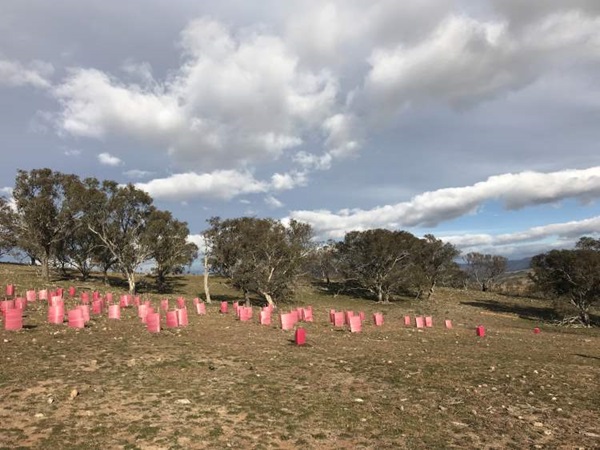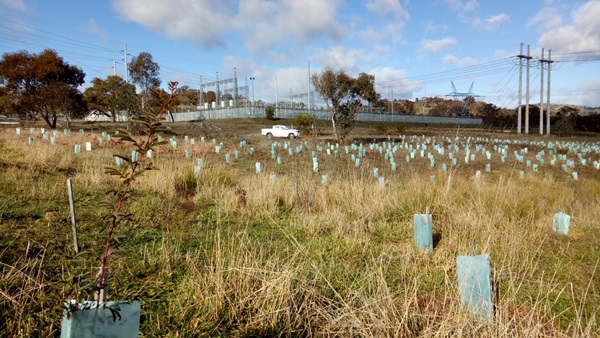
Check out the ways that Icon Water values trees this National Tree day!
Part of Icon Water’s role in delivering water and sewerage services to residents of Canberra is conserving and protecting the natural environment. This Sunday the 2nd of August is National Tree day, which is why we wanted to share with everyone the ways Icon Water carefully manages and values these natural assets.
Icon Water Protection and Rejuvenation of Box Gum Woodlands:
The Murrumbidgee to Googong (M2G) offset is approximately 110 hectares of land which is managed and protected by Icon Water to improve and maintain biodiversity. This land includes a diverse range of native species, including old growth and rejuvenating Eucalyptus. Of particular significance, is the Box-Gum Woodland that is found in the region. The Box-Gum Woodland describes an ecological community where White Box, Yellow Box, and Blakely’s Red Gum trees grow.

Native trees being planted at Icon Water's offset property (Williamsdale)
This ecological community is listed as a critically endangered ecological community within Australia. In most locations, it has been cleared significantly for agricultural purposes. Due, to the high levels of clearing that have taken place, and continued grazing, large areas of healthy, regenerating Box-Gum Woodland are extremely scarce.
Areas like those found in the Murrumbidgee to Googong offset, which contain several mature and regenerating trees are critical. These spaces allow for current and future breeding and foraging habitat for woodland animals, such as Squirrel Gliders and Superb Parrots.

Native trees planted at Icon Water's offset property (Williamsdale) nearby to the electricty substation
Icon Water is working hard at improving and preserving these areas of ecological significance. Our team manages the landscape by maintaining vegetation cover, enhancing habitat connectivity, managing pest animals and weeds and encouraging populations of threatened and significant plant and animal species based on monitoring and adaptive management programs.
The Fine Balance between tree protection and bushfire prevention:
The bushfire operations plan (BOP) run by Icon Water’s Catchment Protection and Land Management team seeks to minimise the likelihood, consequence and impact of bushfires occurring and spreading from Icon Water sites.
This plan involves removing all dangerous fuel loads whilst maintaining the biodiversity and value of trees. We are able to achieve this by using a tactic called ‘Habitat Pruning’. Rather than completely removing a tree that presents a fire risk, we only remove the necessary branches in order to preserve the habitat and value of the tree.
| Before BOP Work | After BOP work | |

| 
|
This is particularly significant when it comes to decaying and hollowed out trees. Tree hollows form an essential part of the natural landscape as they are used as nesting sites, shelters and safe refuges for a diverse range of native species.
Icon Water recognises the significant value trees hold and we work hard to protect and maintain these natural assets.
NSW office of Environment and Heritage (2020). White Box – Yellow Box – Blakely’s Red Gum Grassy Woodland and Derived Native Grassland - profile | NSW Environment, Energy and Science. [online] www.environment.nsw.gov.au.
Available at: https://www.environment.nsw.gov.au/threatenedSpeciesApp/profile.aspx?id=10837 [Accessed 30 Jul. 2020].
